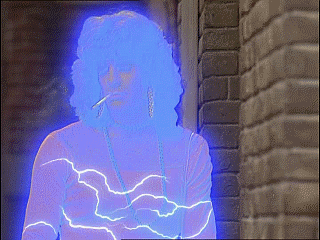Doobie Doo
Veteran
Researchers Have Achieved Sustained Long-Distance Quantum Teleportation
The breakthrough, made by researchers at Caltech, Fermilab and NASA, among others, is a step towards a practical quantum internet.

By Becky Ferreira

By Jason Koebler
December 17, 2020, 9:00am
IMAGE: YUICHIRO CHINO VIA GETTY IMAGES
In a major breakthrough for the quest toward quantum internet, a technology that would revolutionize computing in myriad ways, a consortium of well-regarded institutions have announced the first demonstration of sustained, high-fidelity quantum teleportation over long distances.
Led by Caltech, a collaboration between Fermilab, AT&T, Harvard University, NASA’s Jet Propulsion Laboratory, and the University of Calgary reports the successful teleportation of qubits, basic units of quantum information, across 22 kilometers of fiber in two testbeds: the Caltech Quantum Network and the Fermilab Quantum Network.
“The team has been working persistently and keeping our heads down in the past few years,” said Maria Spiropulu, a particle physicist at Caltech who directs the INQNET research program and co-authored the new paper, in an email.
Though the collaboration knew it had “achieved significant results” by the spring of 2020, Spiropulu added, they refrained from sharing the news, even informally on social media, until the publication of the full study this week.
“We wanted to push the envelope for this type of research and take important steps on a path to realize both real-life applications for quantum communications and networks and test fundamental physics ideas,” said Panagiotis Spentzouris, head of the Quantum Science Program at Fermilab, in an email.
“So, when we finally did it, the team was elated, very proud for achieving these high-quality, record-breaking results,” he continued. “And we are very excited that we can move to the next phase, utilizing the know-how and the technologies from this work towards the deployment of quantum networks.”
The researchers say their experiment used "off-the-shelf" equipment that is compatible with both existing telecommunications infrastructure and emerging quantum technologies. The results “provide a realistic foundation for a high-fidelity quantum Internet with practical devices,” according to a study released on Tuesday in the journal PRX Quantum report.
Quantum teleportation does not involve the actual transfer of matter. Rather, quantum particles are entangled (dependent on each other, even over long distances) and somehow know the property of their other half. From our explainer earlier this year:
In a way, entangled particles behave as if they are aware of how the other particle is behaving. Quantum particles, at any point, are in a quantum state of probabilities, where properties like position, momentum, and spin of the particle are not precisely determined until there is some measurement. For entangled particles, the quantum state of each depends on the quantum state of the other; if one particle is measured and changes state, for example, the other particle’s state will change accordingly.
The study aimed to teleport the state of quantum qubits, or "quantum bits," which are the basic units of quantum computing. According to the study, the researchers set up what is basically a compact network with three nodes: Alice, Charlie, and Bob. In this experiment, Alice sends a qubit to Charlie. Bob has an entangled pair of qubits, and also sends one qubit to Charlie, where it interferes with Alice's qubit. Charlie projects Alice's qubit onto an entangled quantum Bell State that transfers the state of Alice's original qubit to Bob's remaining qubit.
The breakthrough is notable for a few reasons. Many previous demonstrations of quantum teleportation have proven to be unstable over long distances. For example, in 2016, researchers at the University of Calgary were able to perform quantum teleportation at a distance of six kilometers. This was the world record at the time and was seen as a major achievement.
The ultimate goal is to create quantum networks that would use entanglement and superposition to vastly increase computing speed, power, and security, relative to classical computers. For example, the U.S. Department of Energy has an ambitious plan to build a quantum network between its National Laboratories.
Any field that relies on computers would be affected by the realization of this technology, though much of the focus of the future potential of quantum networks revolves around cryptography, search algorithms, financial services, and quantum simulations that could model complex phenomena.
Quantum computing has been on the horizon for years, and this study takes us one step closer to realizing it on a practical scale. But don’t expect to surf a quantum internet anytime soon.
“People on social media are asking if they should sign up for a quantum internet provider (jokingly of course),” Spiropulu said. “We need (a lot) more R&D work.”
Now that Fermilab, Caltech, and its partners have demonstrated this key step toward these networks, the team plans to further develop quantum information technology by building a metropolitan-scale network, called the Illinois Express Quantum Network, around Chicago.
“There are many fronts that we need to push forward,” said Spentzouris, “both in applications of quantum communication and network technologies and in advancing the engineering of the systems. We are already working hard on developing architecture, processes, and protocols for quantum networks and on optimizing along some metrics including rate of communications and range.”
Researchers Have Achieved Sustained Long-Distance Quantum Teleportation
The breakthrough, made by researchers at Caltech, Fermilab and NASA, among others, is a step towards a practical quantum internet.

By Becky Ferreira

By Jason Koebler
December 17, 2020, 9:00am
IMAGE: YUICHIRO CHINO VIA GETTY IMAGES
In a major breakthrough for the quest toward quantum internet, a technology that would revolutionize computing in myriad ways, a consortium of well-regarded institutions have announced the first demonstration of sustained, high-fidelity quantum teleportation over long distances.
Led by Caltech, a collaboration between Fermilab, AT&T, Harvard University, NASA’s Jet Propulsion Laboratory, and the University of Calgary reports the successful teleportation of qubits, basic units of quantum information, across 22 kilometers of fiber in two testbeds: the Caltech Quantum Network and the Fermilab Quantum Network.
“The team has been working persistently and keeping our heads down in the past few years,” said Maria Spiropulu, a particle physicist at Caltech who directs the INQNET research program and co-authored the new paper, in an email.
Though the collaboration knew it had “achieved significant results” by the spring of 2020, Spiropulu added, they refrained from sharing the news, even informally on social media, until the publication of the full study this week.
“We wanted to push the envelope for this type of research and take important steps on a path to realize both real-life applications for quantum communications and networks and test fundamental physics ideas,” said Panagiotis Spentzouris, head of the Quantum Science Program at Fermilab, in an email.
“So, when we finally did it, the team was elated, very proud for achieving these high-quality, record-breaking results,” he continued. “And we are very excited that we can move to the next phase, utilizing the know-how and the technologies from this work towards the deployment of quantum networks.”
The researchers say their experiment used "off-the-shelf" equipment that is compatible with both existing telecommunications infrastructure and emerging quantum technologies. The results “provide a realistic foundation for a high-fidelity quantum Internet with practical devices,” according to a study released on Tuesday in the journal PRX Quantum report.
Quantum teleportation does not involve the actual transfer of matter. Rather, quantum particles are entangled (dependent on each other, even over long distances) and somehow know the property of their other half. From our explainer earlier this year:
In a way, entangled particles behave as if they are aware of how the other particle is behaving. Quantum particles, at any point, are in a quantum state of probabilities, where properties like position, momentum, and spin of the particle are not precisely determined until there is some measurement. For entangled particles, the quantum state of each depends on the quantum state of the other; if one particle is measured and changes state, for example, the other particle’s state will change accordingly.
The study aimed to teleport the state of quantum qubits, or "quantum bits," which are the basic units of quantum computing. According to the study, the researchers set up what is basically a compact network with three nodes: Alice, Charlie, and Bob. In this experiment, Alice sends a qubit to Charlie. Bob has an entangled pair of qubits, and also sends one qubit to Charlie, where it interferes with Alice's qubit. Charlie projects Alice's qubit onto an entangled quantum Bell State that transfers the state of Alice's original qubit to Bob's remaining qubit.
The breakthrough is notable for a few reasons. Many previous demonstrations of quantum teleportation have proven to be unstable over long distances. For example, in 2016, researchers at the University of Calgary were able to perform quantum teleportation at a distance of six kilometers. This was the world record at the time and was seen as a major achievement.
The ultimate goal is to create quantum networks that would use entanglement and superposition to vastly increase computing speed, power, and security, relative to classical computers. For example, the U.S. Department of Energy has an ambitious plan to build a quantum network between its National Laboratories.
Any field that relies on computers would be affected by the realization of this technology, though much of the focus of the future potential of quantum networks revolves around cryptography, search algorithms, financial services, and quantum simulations that could model complex phenomena.
Quantum computing has been on the horizon for years, and this study takes us one step closer to realizing it on a practical scale. But don’t expect to surf a quantum internet anytime soon.
“People on social media are asking if they should sign up for a quantum internet provider (jokingly of course),” Spiropulu said. “We need (a lot) more R&D work.”
Now that Fermilab, Caltech, and its partners have demonstrated this key step toward these networks, the team plans to further develop quantum information technology by building a metropolitan-scale network, called the Illinois Express Quantum Network, around Chicago.
“There are many fronts that we need to push forward,” said Spentzouris, “both in applications of quantum communication and network technologies and in advancing the engineering of the systems. We are already working hard on developing architecture, processes, and protocols for quantum networks and on optimizing along some metrics including rate of communications and range.”
Researchers Have Achieved Sustained Long-Distance Quantum Teleportation





 nikkas was expecting a Jeff Goldblum situation
nikkas was expecting a Jeff Goldblum situation damn. They finally figured out how to use quantum entanglement. As a compEng who had to deal heavy in physics, I thought this was a pipe dream. This will revolutionizes communication.
damn. They finally figured out how to use quantum entanglement. As a compEng who had to deal heavy in physics, I thought this was a pipe dream. This will revolutionizes communication.






